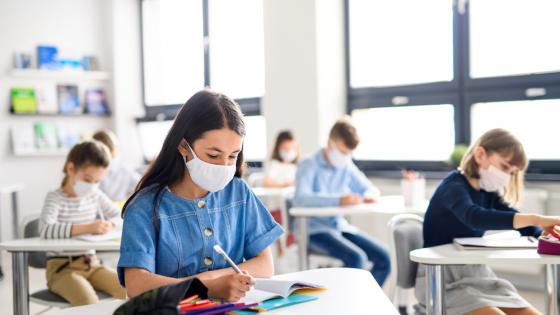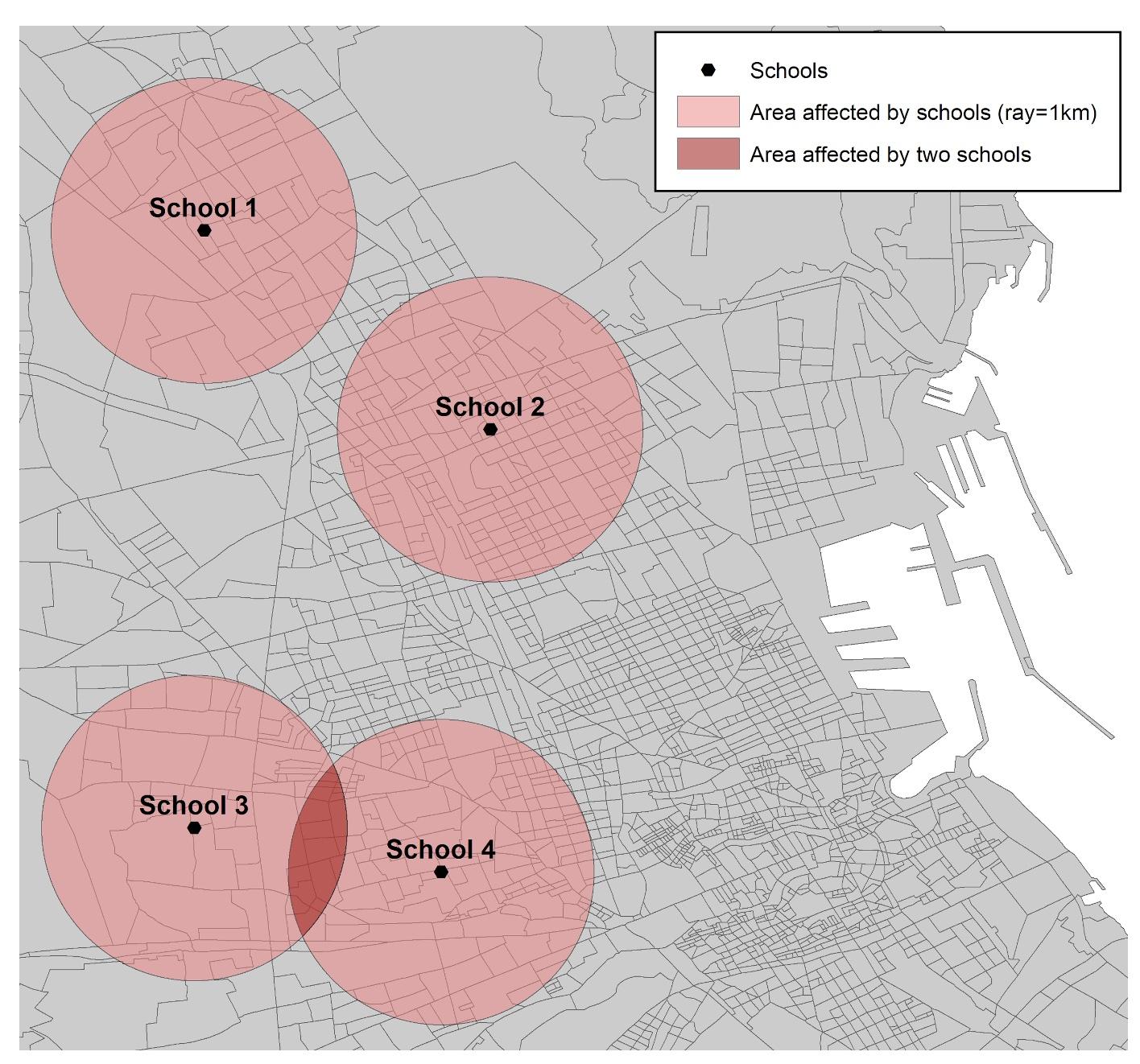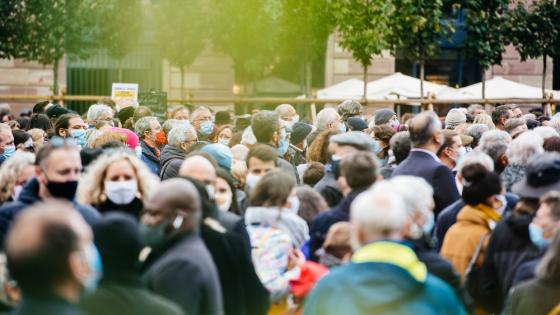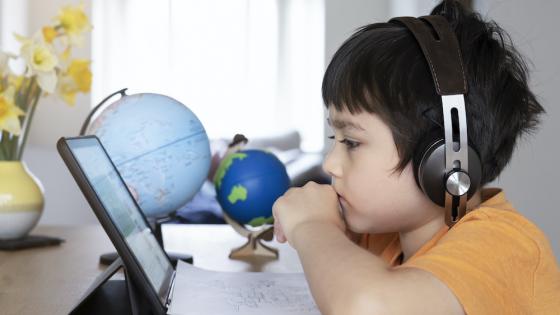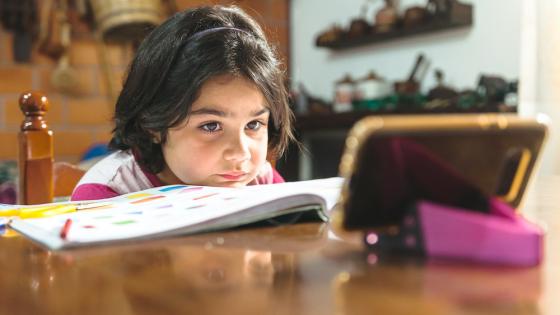In recent months, policymakers, virologists, and social science researchers have extensively debated whether schools are triggering the diffusion of the Covid-19. This question is at the centre of a broader debate about socioeconomic determinants of the Covid-19 pandemic and the potential cost of mass school closures on human capital accumulation and long-run growth. From a policy perspective, weighing the costs and benefits of school closure is becoming a top priority issue, with implications on both current and future generations.
As argued by Psacharoupolos et al. (2020), the long-run costs of human capital losses are enormous, especially for low-income countries, leading to an upsurge of inequality due to increased dispersion in educational achievement (Agostinelli et al. 2020, Engzell et al. 2020). While the cost due to school closures is massive, the benefits in terms of a decrease in contagion remains uncertain. School closures were implemented extensively during the first wave, together with several other prevention and protection measures. After summer 2020, the pandemic's second wave hit several countries worldwide right after, or coinciding with, school opening (see Figure 1). Both for the first and the second wave, a set of concomitant factors – such as climate, seasonality, institutional framework, and change in response from the health system – may have played a decisive role in the shift of Covid-19 cases, impeding a correct identification of the role of schools.
Figure 1 Covid-19 cases and school opening
Despite the above challenges, a growing body of literature has investigated whether school closures and openings affect contagion. On one hand, a general survey based on cross-country and metadata analyses has shown that school closures are among the most effective non-medical measures for reducing contagion (Haug et al. 2020, Hsiang et al. 2020). These studies align with others showing that school closures may reduce the diffusion of influenza or pandemic flu in Hong Kong (Ali et al. 2018), France (Cauchemez et al. 2009), and Japan (Kawano and Kakehashi 2015). On the other hand, some studies comparing contagion between school-age and older cohorts, focusing on discontinuity in opening across regions, report more mixed results (Gandini et al. 2020, Isphording et al. 2020, Sebastiani and Palù 2020).
Several problems emerge when one wants to estimate the impact of opening or closing schools on Covid-19 diffusion. It is more difficult for higher data aggregation levels to account for potential confounding effects linked to how local governments dealt with and enforced the restrictions. Also, comparing cases between age cohorts is very likely to result in inaccurate estimates. For example, children and young adults are more likely to be asymptomatic, and therefore less likely to get tested and tracked. This is a potential measurement error that may underestimate the number of cases among the school population while can increase the contagion among the older population (Metha et al. 2020).
In a recent study (Amodio et al. 2020), we investigate the role of schooling in the diffusion of Covid-19 by exploiting exogenous variation, over time and space, in the school openings using Italian microdata from Sicily. The idea is to exploit spatial variation in school re-opening due to a sudden change in regulation from the regional government and the occurrence of a national referendum in September.1 Since some schools were used as polling stations, their opening dates varied between early September and early October, generating granular space-time heterogeneity, which allows us to identify the differential effect of school opening on the diffusion of Covid-19.
We employ a unique weekly panel dataset that we constructed by matching about 67,000 individual cases observed at the census area level for Sicily with information about the date of opening and location of the full sample of Sicilian public schools, hosting about 95% of the total student population. In particular, we uncover the effects of school opening on Covid-19 cases using variation between school localities. We attributed the date of opening of the schools within 1 km of their ray to each census area. When the census area observed more than one school at less than 1 km, we weighted this date for the number of students to account for larger schools' role in the change of contagion transmission. Since between 71% and 85% of students at pre-primary, primary, and middle school reside less than 15 minutes from their school (Alietti et al., 2011; ISTAT, 2020), these localities are expected to be homogeneous, mediating confounding factors.
Figure 2 An example of linking the census areas to school opening dates for Palermo
Our main finding is that areas with nearby schools that opened earlier exhibited an average increase of 2% in Covid-19 cases two weeks after the school opening. In addition, the effect of school opening is non-linear on the pre-existent number of Covid-19 cases, with more cases observed in areas where some instances were already present at the time of opening. The effect remains consistent when accounting for the dynamic evolution of Covid-19 through a system GMM panel estimation and when heterogeneity among schools, population structure, class size, and other determinants of school opening. This impact appears to be mostly driven by schooling levels below high school. High schools, being specialised in subjects, imply more mobility across the city and their opening potentially has an effect at greater distance. The effects seem to disappear when class size is smaller than the median, with policy implications linked to the reorganisation of school buildings.
An additional heterogeneity analysis offers some ways forward and further reflections on what can be done. While the effect of school opening is positive and significant for both individuals older than 19 years old and those younger, the former is associated with a more substantial impact than the latter. This result supports the hypothesis that the school-age population is more asymptomatic and less likely to be tracked. Also, school opening is not significant for census areas near schools with an average class size below the median. This may suggest that contagion can be limited even with a school operating, but unfortunately it does not provide precise information on the actions to be undertaken. Finally, school opening appears to affect the diffusion of Covid-19 into less densely populated areas, which may derive from the fact that these school zones have a major strength of local social interaction.
The last part of the analysis develops a set of counterfactual scenarios on what could have happened if schools had not opened or if they had opened only partially. This is done by using the estimated coefficients to predict the change in several cases at different levels of the school opening variable. The results need to be taken with caution, as it is not known whether social interactions outside schools would have changed if schools had remained closed. However, the cumulated effect suggests a decrease of between 14.6% and 26.1% in the cumulative number of Covid-19 cases measured on 14 December in the alternative scenario of a full school closure.
In summary, school openings do appear to affect the number of Covid-19 cases at a local level. The effect, however, is highly heterogeneous across school, population, and institutional characteristics. This may explain why the emerging literature in medicine and social science has found mixed results. More work is needed to determine the precise conditions for safe school opening and to understand whether the economic costs of closures are large enough to justify an upsurge in contagion linked to operating face-to-face school activities.
References
Agostinelli, F, M Doepke, G Sorrenti, and F Zilibotti (2020), “When the Great Equalizer Shuts Down: Schools, Peers, and Parents in Pandemic Times”, NBER Working Paper No. 28264.
Ali, S T, B J Cowling, E H Y Lau, V J Fang, and G M Leung (2018), “Mitigation of Influenza B Epidemic with School Closures, Hong Kong, 2018”, Emerging Infectious Diseases 24, 2071–2073.
Alietti, A, D Renzi, M Vercesi, and A Prisco (2011), “Children’s Independent Mobility in Italy”, Istituto di Scienze e Tecnologie della Cognizione, CNR.
Amodio, E, M Battisti, A Kourtellos, G Maggio and C M Maida (2020), “Schools opening and Covid-19 diffusion: evidence from geolocalized microdata”, Covid Economics 65.
Engzell, P, A Freyd, and M Verhagen (2020), “Learning inequality during the COVID-19 pandemic”, SocArXiv, 29 October.
Gandini, S, M Rainisio, M L Iannuzzo, F Bellerba, F Cecconi, and L Scorrano (2020), “No evidence of association between schools and SARS-CoV-2 second wave in Italy”, medRxiv 2020.12.16.20248134.
Haug, N, L Geyrhofer, A Londei et al. (2020), “Ranking the effectiveness of worldwide COVID-19 government interventions”, Nature Human Behaviour 4, 1303–1312.
Hsiang, S, D Allen, S Annan-Phan, K Bell et al. (2020), “The effect of large-scale anti-contagion policies on the COVID-19 pandemic”, Nature 584, 262–285.
Isphording, I E, M Lipfert, and N Pestel (2020), “School Re-Openings after Summer Breaks in Germany Did Not Increase SARS-CoV-2 Cases”, IZA DP No. 13790.
Istituto Nazionale di Statistica (ISTAT) (2020), Indagine Multiscopo sulle famiglie: aspetti della vita quotidiana.
Kawano, S and M Kakehashi (2015), “Substantial Impact of School Closure on the Transmission Dynamics during the Pandemic Flu H1N1-2009 in Oita, Japan”, PLoS One 10, 1–15.
Mehta, N S, O T Mytton, E W S et al. (2020), “Sars-cov-2 (covid-19): What do we know about children? a systematic review”, Clinical Infectious Diseases 71, 2469.
Psacharopoulos, G, V Collis, H A Patrinos and E Vegas (2020), “Lost Wages: The COVID-19 Cost of School Closures”, IZA DP No. 13641.
Sebastiani, G and G Palu (2020), “COVID-19 and School Activities in Italy”, Viruses 12.
Endnotes
1 The regional government split the possibility to open after 21 September just to polling stations on 20 August, due to the national referendum of 21 September and some local elections. Then, just a few days before opening, they decided to open this possibility to all schools just a few days before the opening (31 August). We model these decisions with school-level characteristics concerning the school organisation, but also show as levels lower than high school that are institutionally designed as polling stations open much later than high schools, on average.
